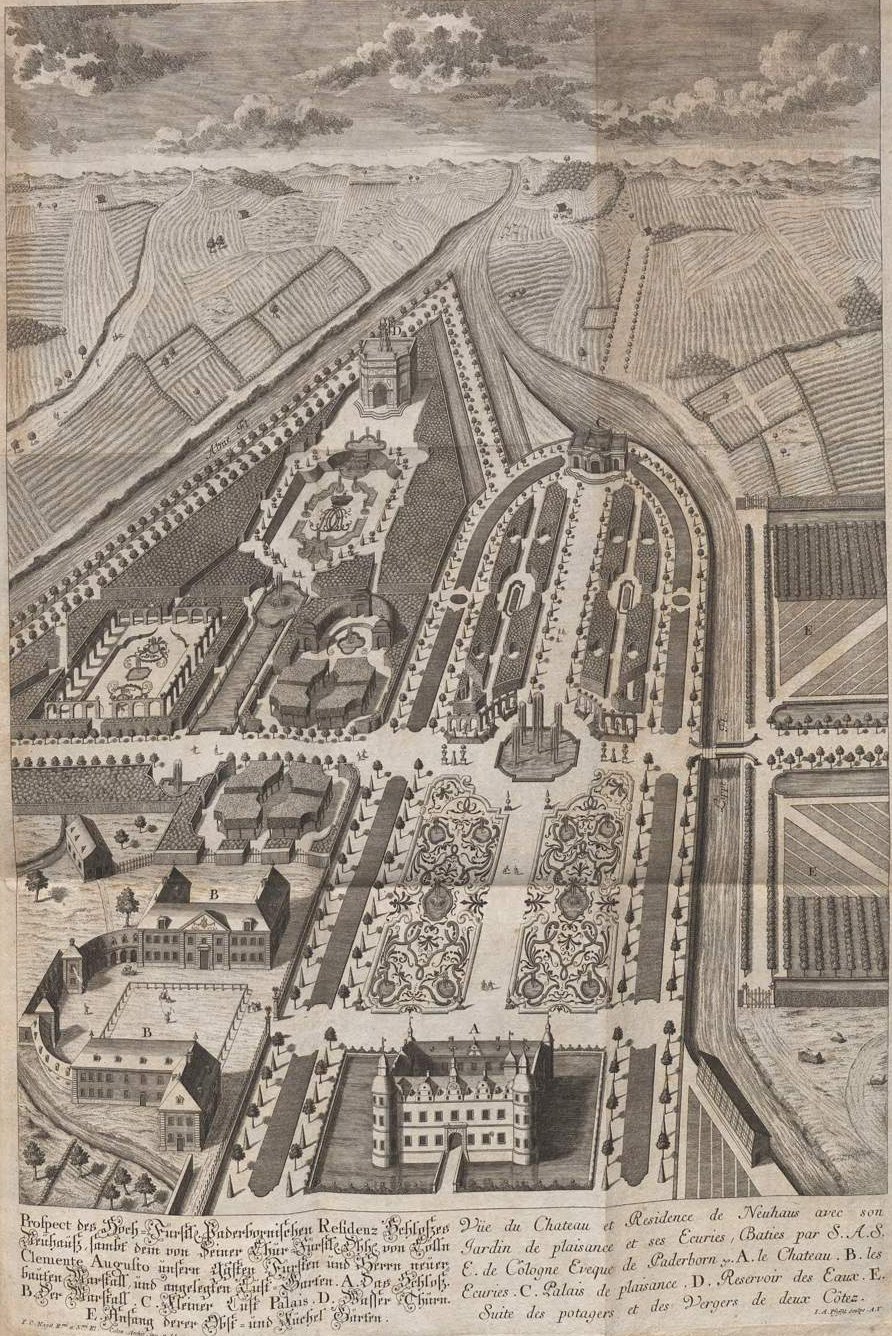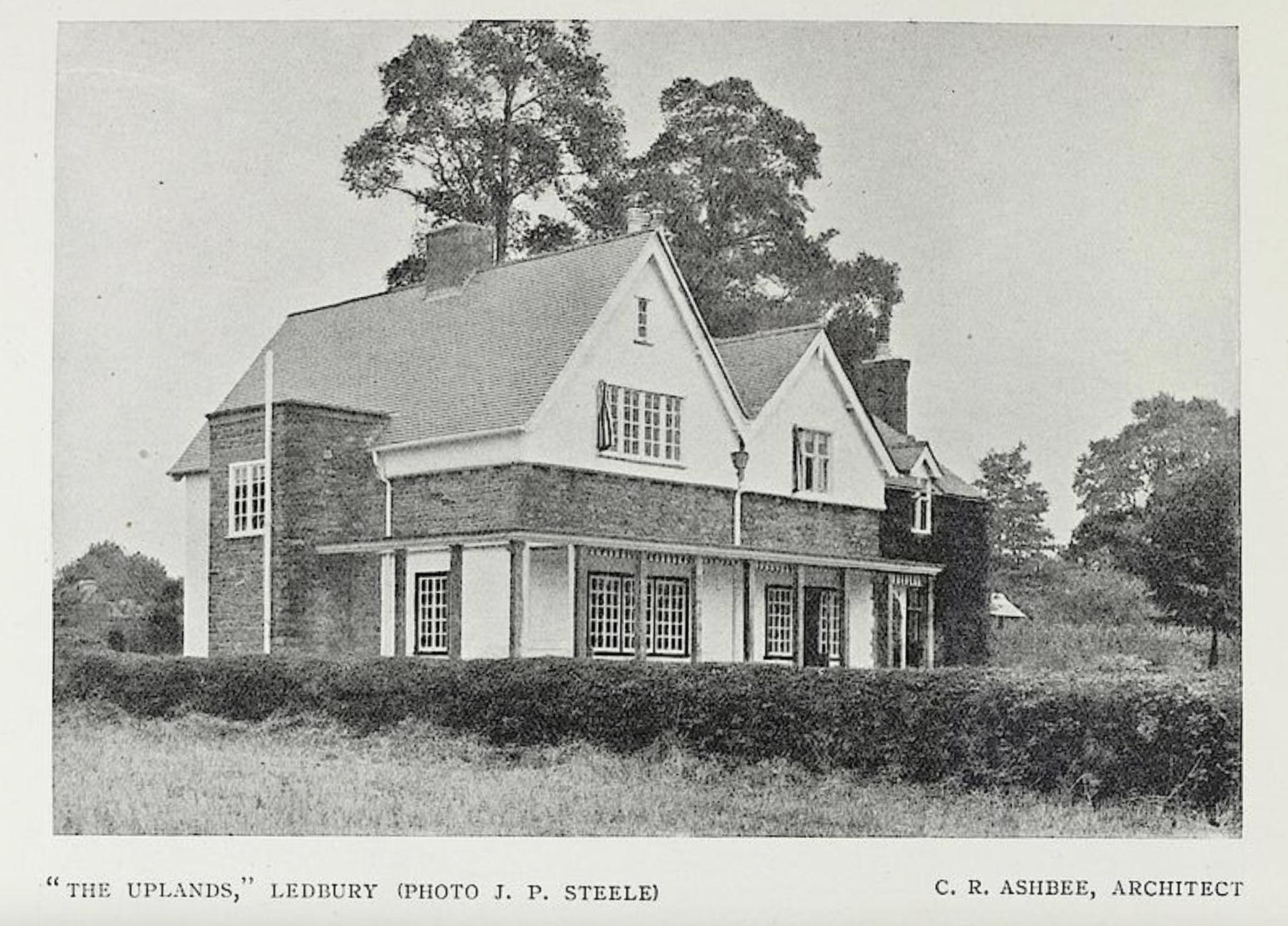|
The Wodehouse
The Wodehouse is a grade II* listed English country house near Wombourne, Staffordshire, notable as the family seat of the Georgian landscape designer and musicologist Sir Samuel Hellier and, a century later, Colonel Thomas Bradney Shaw-Hellier, director of the Royal Military School of Music. For almost 200 years the family owned the Hellier Stradivarius. It is claimed that the Wodehouse has not been sold for over 900 years, though more than once the family has died out. House, garden, and estate The Wodehouse is situated on the Wom Brook, to the east of the village, and the estate has existed since medieval times. The manor house itself was listed by English Heritage in 1953 as II*, as were the stable block and coach house in 1963. The early-eighteenth-century Wodehouse farmhouse and mill, across the road from the main house, were grade II* listed in 1973. In 1987, the barn, the dam over the mill pool, and the causeway over its other end all received grade II status. In ... [...More Info...] [...Related Items...] OR: [Wikipedia] [Google] [Baidu] |
Listed Building
In the United Kingdom, a listed building or listed structure is one that has been placed on one of the four statutory lists maintained by Historic England in England, Historic Environment Scotland in Scotland, in Wales, and the Northern Ireland Environment Agency in Northern Ireland. The term has also been used in the Republic of Ireland, where buildings are protected under the Planning and Development Act 2000. The statutory term in Ireland is "protected structure". A listed building may not be demolished, extended, or altered without special permission from the local planning authority, which typically consults the relevant central government agency, particularly for significant alterations to the more notable listed buildings. In England and Wales, a national amenity society must be notified of any work to a listed building which involves any element of demolition. Exemption from secular listed building control is provided for some buildings in current use for worsh ... [...More Info...] [...Related Items...] OR: [Wikipedia] [Google] [Baidu] |
Pleasure Garden
A pleasure garden is a park or garden that is open to the public for recreation and entertainment. Pleasure gardens differ from other public gardens by serving as venues for entertainment, variously featuring such attractions as concert halls, bandstands, amusement rides, zoos, and menageries. Historically a "pleasure garden" or '' pleasure ground'' meant private flower gardens, shrub gardens or formal wooded areas such as bosquets, that were planted for enjoyment, with ornamental plants and neat paths for walking. These were distinguished from the areas in a large garden planted as lawns or a landscaped park, or the "useful" areas of the kitchen garden and woodland. Thus most modern gardens would have been called "pleasure gardens", especially in the 17th and 18th centuries. The two meanings of the term, as the ornamental parts of a garden, and as a commercial place of entertainment, coexisted in English from at least the 17th century. History Public pleasure garde ... [...More Info...] [...Related Items...] OR: [Wikipedia] [Google] [Baidu] |
National Gardens Scheme
The National Garden Scheme opens privately owned gardens in England, Northern Ireland, Wales, and the Channel Islands on selected dates for charity. It was founded in 1927 with the aim of "opening gardens of quality, character and interest to the public for charity". The scheme has raised over £60 million since it began, and normally opens thousands of gardens a year."Yellow Book" (2008). National Gardens Scheme. County organisers are responsible for vetting gardens to make sure they are of sufficient interest. (Features)(Homefront). ''''. 2002. Retrieved via |
Charles Robert Ashbee
Charles Robert Ashbee (17 May 1863 – 23 May 1942) was an English architect and designer who was a prime mover of the Arts and Crafts movement, which took its craft ethic from the works of John Ruskin and its co-operative structure from the socialism of William Morris. Ashbee was defined by one source as "designer, architect, entrepreneur, and social reformer". His disciplines included metalwork, textile design, furniture, jewellery and other objects in the Modern Style (British Art Nouveau style) and Arts and Crafts genres. He became an elected member of the Art Workers' Guild in 1892, and was elected as its Master in 1929. Early life Ashbee was born in 1863 in Isleworth, then just West of the Victorian sprawl of London and now a suburb. He was the first child and only son of businessman Henry Spencer Ashbee, the senior partner in the London branch of the firm of Charles Lavy & Co., and Elizabeth Jenny Lavi (1842–1919), daughter of his German business partner. His parents ... [...More Info...] [...Related Items...] OR: [Wikipedia] [Google] [Baidu] |
Gothic Revival
Gothic Revival (also referred to as Victorian Gothic, neo-Gothic, or Gothick) is an architectural movement that began in the late 1740s in England. The movement gained momentum and expanded in the first half of the 19th century, as increasingly serious and learned admirers of the neo-Gothic styles sought to revive medieval Gothic architecture, intending to complement or even supersede the neoclassical styles prevalent at the time. Gothic Revival draws upon features of medieval examples, including decorative patterns, finials, lancet windows, and hood moulds. By the middle of the 19th century, Gothic had become the preeminent architectural style in the Western world, only to fall out of fashion in the 1880s and early 1890s. The Gothic Revival movement's roots are intertwined with philosophical movements associated with Catholicism and a re-awakening of high church or Anglo-Catholic belief concerned by the growth of religious nonconformism. Ultimately, the " Anglo-Catholicism ... [...More Info...] [...Related Items...] OR: [Wikipedia] [Google] [Baidu] |
George Frederick Bodley
George Frederick Bodley (14 March 182721 October 1907) was an English Gothic Revival architect. He was a pupil of Sir George Gilbert Scott, and worked in partnership with Thomas Garner for much of his career. He was one of the founders of Watts & Co. Personal life Bodley was the youngest son of William Hulme Bodley, M.D., of Edinburgh, physician at Hull Royal Infirmary, Hull, who in 1838 retired to his wife's home town, Brighton, Sussex, England. George's eldest brother, the Rev. W.H. Bodley, became a well-known Roman Catholic preacher and a professor at St Mary's College, New Oscott, Birmingham. He married Minna F.H. Reavely, daughter of Thomas George Wood Reavely, at Kinnersley Castle in 1872. They had a son, George H. Bodley, born in 1874. Career Bodley was articled to the architect Sir George Gilbert Scott, a relative by marriage, under whose influence he became imbued with the spirit of the Gothic revival, and he became known as the chief exponent of 14th cent ... [...More Info...] [...Related Items...] OR: [Wikipedia] [Google] [Baidu] |
Medieval Architecture
Medieval architecture is architecture common in the Middle Ages, and includes religious, civil, and military buildings. Styles include pre-Romanesque, Romanesque, and Gothic. While most of the surviving medieval architecture is to be seen in churches and castles, examples of civic and domestic architecture can be found throughout Europe, in manor houses, town halls, almshouses, bridges, and residential houses. Designs Religious architecture The Latin cross plan, common in medieval ecclesiastical architecture, takes the Roman basilica as its primary model with subsequent developments. It consists of a nave, transepts, and the altar stands at the east end (see ''Cathedral diagram''). Also, cathedrals influenced or commissioned by Justinian I, Justinian employed the Byzantine architecture, Byzantine style of domes and a Greek cross (resembling a plus sign), with the altar located in the sanctuary on the east side of the church. Military architecture Surviving examples ... [...More Info...] [...Related Items...] OR: [Wikipedia] [Google] [Baidu] |
Elizabethan Architecture
Elizabethan architecture refers to buildings of a certain style constructed during the reign of Queen Elizabeth I of England and Ireland from 1558–1603. Historically, the era sits between the long era of the dominant architectural style of religious buildings by the Catholic Church, which ended abruptly at the Dissolution of the Monasteries from c.1536, and the advent of a court culture of pan-European artistic ambition under James I (1603–25). Stylistically, Elizabethan architecture is notably pluralistic. It came at the end of insular traditions in design and construction called the Perpendicular style in the church building, the fenestration, vaulting techniques, and open truss designs of which often affected the detail of larger domestic buildings. However, English design had become open to the influence of early printed architectural texts (namely Vitruvius and Alberti) imported to England by members of the church as early as the 1480s. Into the 16th century, il ... [...More Info...] [...Related Items...] OR: [Wikipedia] [Google] [Baidu] |
Samuel Lewis (publisher)
Samuel Lewis (c. 1782 – 1865) was the editor and publisher of topographical dictionaries and maps of the United Kingdom of Great Britain and Ireland. The aim of the texts was to give in 'a condensed form', a faithful and impartial description of each place. The firm of Samuel Lewis and Co. was based in London. Samuel Lewis the elder died in 1865. His son of the same name predeceased him in 1862. ''A Topographical Dictionary of England'' This work contains every fact of importance tending to illustrate the local history of England. Arranged alphabetically by place (village, parish, town, etc.), it provides a faithful description of all English localities as they existed at the time of first publication (1831), showing exactly where a particular civil parish was located in relation to the nearest town or towns, the barony, county, and province in which it was situated, its principal landowners, the diocese in which it was situated, and—of novel importance—the Roman Cathol ... [...More Info...] [...Related Items...] OR: [Wikipedia] [Google] [Baidu] |
Thomas Harwood (priest)
Thomas Harwood D.D. (1767–1842) was an English cleric, schoolmaster and antiquarian. Life Born on 18 May 1767 at Shepperton, Middlesex, a parish where his father and grandfather had been patrons and rectors, he went to Eton College on 18 November 1773, when only six years and a half old, and in September 1775 was admitted on the foundation. In 1784 he matriculated at University College, Oxford. In 1789 he was ordained deacon, and then entered Emmanuel College, Cambridge. Headmaster of Lichfield grammar school from October 1791 till 1813, Harwood then moved within Lichfield to a house of his own. In 1800 he was appointed perpetual curate of Hammerwich, near Lichfield. He graduated B.D. at Cambridge in 1811, and in 1814 was presented, on his own nomination, to the rectory of Stawley, Somersetshire; but after two years there, he resigned the living in 1819, and returned to Lichfield. He was created D.D. of Cambridge in 1822, and for many years was a fellow of the Society of Ant ... [...More Info...] [...Related Items...] OR: [Wikipedia] [Google] [Baidu] |
Sampson Erdeswicke
Sampson Erdeswicke (born c. 1535x1540; died 1603) was an English antiquary and chorographer. Background Sampson's father, Hugh Erdeswicke claimed descent from Richard de Vernon, Baron of Shipbrook in the reign of William the Conqueror. The family resided originally at Erdeswicke Hall, Minshull Vernon, in Cheshire, afterwards at Leighton and finally in the reign of Edward III settled at Sandon in Staffordshire, at Sandon Hall (in its medieval form). Hugh Erdeswicke was a staunch Catholic; in 1582 he was reported to the Privy Council by the Bishop of Coventry as "the sorest and dangerousest papist, one of them in all England". He is said to have struck a justice of the peace on the pate with a crabtree staff openly in Sandon churchyard, possibly the same person whom he found upon some occasion ransacking his house. Life Sampson was born at Sandon, and entered Brasenose College, Oxford as a gentleman-commoner in 1553. Leaving Oxford, he returned to his life as a country gentl ... [...More Info...] [...Related Items...] OR: [Wikipedia] [Google] [Baidu] |








_cropped_2.jpg)

